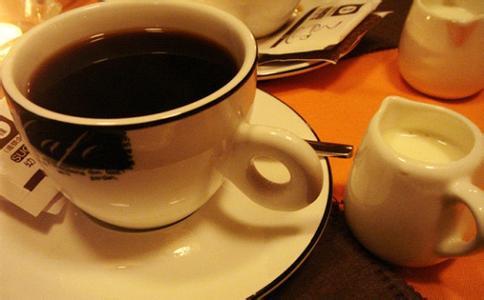The origin of coffee beans Coffee originated in Ethiopia
Ethiopia in East Africa means "land inhabited by people tanned by the sun" in ancient Greek. Ethiopia's unique cultural tradition, spectacular scenery, pleasant climate, rich animal and plant resources, important places of interest, hospitality and friendly people make it one of the major tourist destinations in Africa.

The name Coffee comes from kaffa in Ethiopia.
Do you know? The root of coffee is in Ethiopia. It is said that the word coffee in English also comes from the place name "Kaffa" in Ethiopia. Legend has it that around 900 AD, when a shepherd in the Cafa region of Ethiopia was grazing in the mountains, he found that the sheep were competing for a kind of red berries. After eating, the sheep were excited and reacted abnormally. The shepherd was scared all night because he thought his sheep had eaten some harmful food. Who knew the sheep were safe and sound the next day. This unexpected discovery prompted shepherds to collect the wild fruit and boil juice to quench their thirst. He felt that the fruit juice was mellow and excited after drinking it. So he began to plant this plant, which led to the development of large-scale coffee cultivation, and the name of coffee evolved from the curry method. After that, coffee spread from Ethiopia to the world.
Coffee is as pure as a thoroughbred.
Ethiopia grows coffee in different climatic zones, so it has more than 140 farm varieties, and fresh coffee is produced all the year round. The quality of Ethiopian coffee varies according to different elevations and regional ecological environment. The Harar coffee in the southeast highland is a typical Muha coffee with strong aroma; the coffee produced in southwest Wollega has a rich fruity flavor; Limu coffee has wine and spice flavor; Sidamo coffee is mild, full-bodied and sour, while Yirgacheffee coffee has floral flavor. Taste Yega Xuefei, chocolate and sour taste more intense, like lemon flying, with a trance of flowers.
Interestingly, Ethiopians also put pictures of horses on the coffee package to show the purity of the coffee. It is said that in the era when horses were the main means of transportation, Ethiopians were proud that Ethiopia had the best thoroughbred horses in the world. Now they give this pride to Ethiopian coffee, "high-quality coffee should be as pure as thoroughbred horses". As a result of adhering to this concept, the taste of coffee here is still so mellow.
Coffee drinking ceremony is well-known.
In traditional Ethiopian families, coffee is drunk two or three times a day, with a variety of drinking rituals or rituals. In the evening, the whole family sat on the ground around a small charcoal stove. The ground around the charcoal stove is covered with specially cut or bought grass. This is a special grass specially used for coffee rituals. When the small charcoal stove is lit, it is necessary to specially pick out a few pieces of white charcoal with thick smoke, shake it in every corner of the house, and then put it on the edge of the stove and let it burn out or extinguish itself. In this way, for a period of time, the whole house or courtyard is shrouded in smoke.
It is usually a teenage girl who prepares coffee for everyone at home. She first grabbed a handful of light green raw coffee beans, put them in a small iron pot on the charcoal stove, scooped up clean water, and scrubbed them with both hands. Then roast the coffee beans with a small wooden shovel, and soon the coffee beans begin to turn dark black and emit an attractive fragrance. When the girl thought it was time for the fire, she picked up the handle of the iron pot and shook the smoky coffee beans and sent them to everyone for everyone to smell. After everyone nodded and said yes, she poured the cooked beans into a small mortar and pounded them with a big iron bar nearly one meter long and as thick as the child's arm. Soon, the handful of beans was mashed into powder.
The girl scraped out the powder little by little with a small wooden spoon and poured it into a clay pot with a thin neck, bulging belly and big ears, added clean water, and boiled it on a small stove. The water soon boiled and boiled for a while, and the fragrance overflowed. The girl placed several porcelain cups the size of a wine cup on a small wooden box, then picked up the big ears of the coffee pot and filled each cup one by one, then put down the pot and toasted the people sitting around with both hands. This process usually lasts 30 minutes.
Warm reminder:
Chinese
Three drinks at the most
However, I would like to remind you that Ethiopian coffee is like Jingyanggang's good wine in the Water margin. That is to say, most Chinese people will definitely feel refreshed after one drink. If they drink two drinks, they will not be able to sleep in the middle of the night. If they drink three drinks, they will not feel sleepy at all that night plus the whole day of the next day. More than three? The consequences would be unimaginable. The coffee in this country is absolutely "green coffee" and has not used any chemical fertilizers or pesticides. As long as you are not afraid of insomnia, please rest assured to enjoy it.
Major attractions in Ethiopia
Ethiopia's scenery and lakes are the main tourist attractions. The highlands of Ethiopia have fascinating scenery and wildlife. In the Great Rift Valley region of Africa, a variety of endemic and common wild animals and birds can be seen, and there are a lot of vehicles going to this area. The spectacular waterfalls on the Blue Nile, the unique wildlife on Mount Thurman, and the Sauf Omar Cave in the southeast are some fascinating attractions. The boulder-hewn Lalibela church, the ancient architecture of Yaha, the Aksum obelisk, the medieval castle of Gondar and the monasteries of Lake Tana, Mount Damo and Mount Libanos are the main tourist attractions.
Holiday hint
Ethiopia still maintains the Roman Julian calendar, which is divided into 13 months, with 30 days per month in the first 12 months, and 5 days in the thirteenth month and 6 days in leap years. Beginning in spring, there is the Ethiopian New year (Tseday) on September 11th. This is the beginning of the harvest season and the time for parties and weddings. The busiest festivals in this country are New Year's Day, Maskal, Gena, Timket, Faseka, Kulubi Gabriel, Gishen Mariam and Axum Tsion in Ethiopia.
Information gas station
Visa: Ethiopia is an outbound tourist destination country for Chinese citizens. Chinese citizens can enjoy the treatment of Ethiopian visa on arrival.
Flights: Ethiopian Airlines is the airline with the widest coverage of African routes. In 2003, Ethiopian Airlines became the first African airline to open a route to Guangzhou, which is also the closest route from Guangzhou to Africa. Ethiopian Airlines has a flight from Guangzhou to Addis Ababa, Ethiopia's capital, every day of the week, except Saturday. In addition, there are three flights in Hong Kong every week.
Accommodation: you don't have to worry about accommodation and food when traveling in northern Ethiopia, and hotels at all levels emerge as the times require. However, the southern region is still relatively closed due to climatic and geographical reasons.
Currency: the local currency is the Ethiopian Ethiopian Birr, which is equivalent to the RMB.
Important Notice :
前街咖啡 FrontStreet Coffee has moved to new addredd:
FrontStreet Coffee Address: 315,Donghua East Road,GuangZhou
Tel:020 38364473
- Prev

Coffee common sense the taste of coffee is enough to make people memorable.
In fact, the taste of coffee is different in everyone's mouth, as long as you feel fragrant, it is worth aftertaste. Think about the bitter taste of coffee, it is not bitter, it is a strange taste. People often say that coffee tastes like life, which needs fine taste. Life is like coffee, you can never get rid of that bitter, but if you can taste it carefully, there will be an aroma after bitterness.
- Next

Inheritance of Coffee basic knowledge of Fine Coffee
The world's first bag of coffee beans slowly left the African continent in the 6th century AD and developed for thousands of years. In 1530, the first coffee shop appeared in Damascus, north of the Ottoman Turkish Empire, and the word coffee appeared in British newspapers in 1601. For more than a thousand years, coffee trees have blossomed everywhere in the most livable land in the world, and finally formed major producing areas. At present
Related
- Beginners will see the "Coffee pull flower" guide!
- What is the difference between ice blog purified milk and ordinary milk coffee?
- Why is the Philippines the largest producer of crops in Liberia?
- For coffee extraction, should the fine powder be retained?
- How does extracted espresso fill pressed powder? How much strength does it take to press the powder?
- How to make jasmine cold extract coffee? Is the jasmine + latte good?
- Will this little toy really make the coffee taste better? How does Lily Drip affect coffee extraction?
- Will the action of slapping the filter cup also affect coffee extraction?
- What's the difference between powder-to-water ratio and powder-to-liquid ratio?
- What is the Ethiopian local species? What does it have to do with Heirloom native species?

